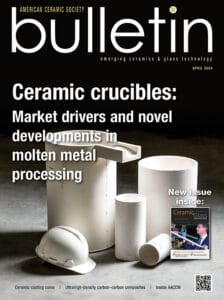
Dr. Andriy Zakutayev is a research scientist at National Renewable Energy Laboratory, working on discovery and design of new materials for energy and electronics applications. Andriy leads a team of researchers that often use high-throughput experimental methods, in close collaboration with theoretical studies, to discovery and design new materials. He is a recipient for the BES Early Career Award, and a principle investigator of many other DOE funded projects. Dr. Zakutayev received his Ph.D. in Physics in 2010 from Oregon State University and B.S. in Electronics in 2006 from Lviv National Polytechnic University (Ukraine).
Title: Discovery and design of electronic materials using high-throughput experimental methods
Abstract: Discovery and design of new materials for electronic applications are at the foundation of technological progress of our modern society. Beyond the classical example of Si-based microelectronics, AlxGa1-xAs enabled optoelectronic devices, InxGa1-xN revolutionized energy-efficient lighting, and SiC is changing power conversion technologies. Historically, these developments have been slow, laborious, and often serendipitous, taking on average two to three decades from demonstration to market adoption. Two factors are accelerating this rate of progress: automation of synthesis and characterization experiments, and computer aided design of the materials composition and structure.
In this presentation, I will overview our recent efforts to discover and design new electronic materials for electronic applications. To this end, we use a combination of thin-film high-throughput (combinatorial) experimental methods and targeted experiments, in tight collaboration with computational and data-driven studies. Potential electronic applications in our focus range from photovoltaic solar cells and photoelectrochemical devices, to neutron detectors and other extreme electronics, to energy-efficient memory and computing. By means of example, I will focus on discovery and design of nitride ferroelectrics with wurtzite crystal structures such as Al1-xScxN, for non-volatile memory and high-temperature devices.
Subscribe to Ceramic Tech Today

Don’t miss the latest ceramic and glass materials news. Receive the CTT newsletter to your email three times a week by subscribing at this link.
Subscribe to Ceramic & Glass Manufacturing Weekly

Don’t miss the latest ceramic and glass business news. Receive the C&GM Weekly newsletter to your email every Monday by subscribing at this link.


